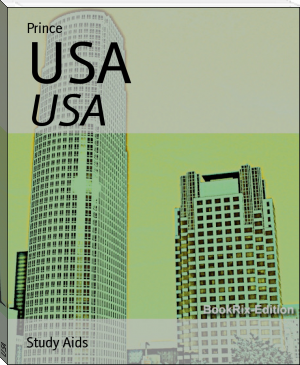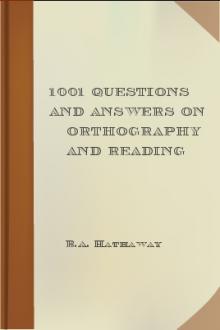Big Dummy's Guide To The Internet, Electronic Frontier Foundation [free ebooks romance novels .TXT] 📗

- Author: Electronic Frontier Foundation
- Performer: 1428042873
Book online «Big Dummy's Guide To The Internet, Electronic Frontier Foundation [free ebooks romance novels .TXT] 📗». Author Electronic Frontier Foundation
Infinity Link Browse book, music, software, video-cassette and
laser-disk catalogs through this system based in
Malvern, Penn. Use gopher to connect to
columbia.ilc.com
Log on as: cas
The Internet Company Sort of a service bureau, this company, based in
Cambridge, Mass., is working with several publishers
on Internet-related products. Its Electronic
Newsstand offers snippets and special
subscription rates to a number of national
magazines, from the New Republic to the New
Yorker. Use gopher to connect to
enews.com
MarketBase You can try the classified-ads system developed
by this company in Santa Barbara, Calif., by
gopher to connect to
mb.com
O’Reilly and Associates Best known for its “Nutshell” books on Unix,
O’Reilly runs three Internet services. The gopher
server, at
ora.com
provides information about the company and its
books. It posts similar information in the
biz.oreilly.announce Usenet newsgroup. Its
Global Network Navigator, accessible through the
World-Wide Web, is a sort of online magazine that
lets users browse through interesting services
and catalogs.
13.2 FYI
The com-priv mailing list is the place to discuss issues surrounding
the commercialization and the privatization of the Internet. To
subscribe (or un-subscribe), send an e-mail request to com-priv-
request@psi.com.
Mary Cronin’s book, “Doing Business on the Internet” (1994, Van
Nostrand Reinhold), takes a more in-depth look at the subject.
Kent State University in Ohio maintains a repository of
“Business Sources on the Net.” Use gopher to connect to refmac.kent.edu.
Chapter 14: CONCLUSION — THE END?
The revolution is just beginning. New communications systems and
digital technologies have already meant dramatic changes in the way we
live. Think of what is already routine that would have been considered
impossible just ten years ago. You can browse through the holdings of
your local library — or of libraries halfway around the world — do your
banking and see if your neighbor has gone bankrupt, all through a
computer and modem.
Imploding costs coupled with exploding power are bringing ever
more powerful computer and digital systems to ever growing numbers of
people. The Net, with its rapidly expanding collection of databases
and other information sources, is no longer limited to the
industrialized nations of the West; today the web extends from Siberia
to Zimbabwe. The cost of computers and modems used to plug into the Net,
meanwhile, continue to plummet, making them ever more affordable.
Cyberspace has become a vital part of millions of people’s daily
lives. People form relationships online, they fall in love, they get
married, all because of initial contacts in cyberspace, that ephemeral
``place’’ that transcends national and state boundaries. Business
deals are transacted entirely in ASCII. Political and social
movements begin online, coordinated by people who could be thousands
of miles apart.
Yet this is only the beginning.
We live in an age of communication, yet the various media we use
to talk to one another remain largely separate systems. One day,
however, your telephone, TV, fax machine and personal computer will be
replaced by a single ``information processor’’ linked to the worldwide
Net by strands of optical fiber.
Beyond databases and file libraries, power will be at your
fingertips. Linked to thousands, even millions of like-minded people,
you’ll be able to participate in social and political movements across
the country and around the world.
How does this happen? In part, it will come about through new
technologies. High-definition television will require the development
of inexpensive computers that can process as much information as
today’s workstations. Telephone and cable companies will cooperate, or
in some cases compete, to bring those fiber-optic cables into your home.
The Clinton administration, arguably the first led by people who
know how to use not only computer networks but computers, is pushing for
creation of a series of “information superhighways” comparable in scope
to the Interstate highway system of the 1950s (one of whose champions in
the Senate has a son elected vice president in 1992).
Right now, we are in the network equivalent of the early 1950s,
just before the creation of that massive highway network. Sure, there are
plenty of interesting things out there, but you have to meander along
two-lane roads, and have a good map, to get to them.
Creation of this new Net will require more than just high-speed
channels and routing equipment; it will require a new communications
paradigm: the Net as information utility. The Net remains a somewhat
complicated and mysterious place. To get something out of the Net today,
you have to spend a fair amount of time with a Net veteran or a manual
like this. You have to learn such arcana as the vagaries of the Unix cd
command.
Contrast this with the telephone, which now also provides access to
large amounts of information through push buttons, or a computer network
such as Prodigy, which one navigates through simple commands and mouse
clicks.
Internet system administrators have begun to realize that not all
people want to learn the intricacies of Unix, and that that fact does
not make them bad people. We are already seeing the development of
simple interfaces that will put the Net’s power to use by millions of
people. You can already see their influence in the menus of gophers and
the World-Wide Web, which require no complex computing skills but which
open the gates to thousands of information resources. Mail programs and
text editors such as pico and pine promise much of the power of older
programs such as emacs at a fraction of the complexity.
Some software engineers are taking this even further, by creating
graphical interfaces that will let somebody navigate the Internet just by
clicking on the screen with a mouse or by calling up an easy text editor,
sort of the way one can now navigate a Macintosh computer — or a
commercial online service such as Prodigy.
Then there are the Internet services themselves.
For every database now available through the Internet, there are
probably three or four that are not. Government agencies are only
now beginning to connect their storehouses of information to the
Net. Several commercial vendors, from database services to booksellers,
have made their services available through the Net.
Few people now use one of the Net’s more interesting
applications. A standard known as MIME lets one send audio and
graphics files in a message. Imagine opening your e-mail one day to hear
your granddaughter’s first words, or a “photo” of your friend’s new
house. Eventually, this standard could allow for distribution of even
small video displays over the Net.
All of this will require vast new amounts of Net power, to handle
both the millions of new people who will jump onto the Net and the new
applications they want. Replicating a moving image on a computer screen
alone takes a phenomenal amount of computer bits, and computing power to
arrange them.
All of this combines into a National Information Infrastructure able
to move billions of bits of information in one second — the kind of
power needed to hook information “hoses” into every business and house.
As these “superhighways” grow, so will the “on ramps,” for a high-
speed road does you little good if you can’t get to it. The costs of
modems seem to fall as fast as those of computers. High-speed modems
(9600 baud and up) are becoming increasingly affordable. At 9600 baud,
you can download a satellite weather image of North America in less than
two minutes, a file that, with a slower modem could take up to 20
minutes to download. Eventually, homes could be connected directly to a
national digital network. Most long-distance phone traffic is already
carried in digital form, through high-volume optical fibers. Phone
companies are ever so slowly working to extend these fibers the “final
mile” to the home. The Electronic Frontier Foundation is working to
ensure these links are affordable.
Beyond the technical questions are increasingly thorny social,
political and economic issues. Who is to have access to these
services, and at what cost? If we live in an information age, are we
laying the seeds for a new information under class, unable to compete
with those fortunate enough to have the money and skills needed to
manipulate new communications channels? Who, in fact, decides who has
access to what? As more companies realize the potential profits to be
made in the new information infrastructure, what happens to such
systems as Usenet, possibly the world’s first successful anarchistic
system, where everybody can say whatever they want?
What are the laws of the electronic frontier? When national and
state boundaries lose their meaning in cyberspace, the question might
even be: WHO is the law? What if a practice that is legal in one
country is “committed” in another country where it is illegal, over a
computer network that crosses through a third country? Who goes after
computer crackers?
What role will you play in the revolution?
Appendix A: THE LINGO
Like any community, the Net has developed its own language.
What follows is a glossary of some of the more common phrases you’ll
likely run into. But it’s only a small subset of net.speak. You an find
a more complete listing in “The New Hacker’s Dictionary,” compiled by
Eric Raymond (MIT Press). Raymond’s work is based on an online reference
known as “The Jargon File,” which you can get through anonymous ftp from
ftp.gnu.mit.ai.mit as jarg300.txt.gz in the pub/gnu directory (see
chapter 7 for information on how to un-compress a .gz file).
ASCII Has two meanings. ASCII is a universal computer code
for English letters and characters. Computers store
all information as binary numbers. In ASCII, the
letter “A” is stored as 01000001, whether the computer
is made by IBM, Apple or Commodore. ASCII also refers
to a method, or protocol, for copying files from one
computer to another over a network, in which neither
computer checks for any errors that might have been
caused by static or other problems.
ANSI Computers use several different methods for deciding
how to put information on your screen and how your
keyboard interacts with the screen. ANSI is one of
these “terminal emulation” methods. Although most
popular on PC-based bulletin-board systems, it can also
be found on some Net sites. To use it properly, you
will first have to turn it on, or enable it, in your
communications software.
ARPANet A predecessor of the Internet.





Comments (0)